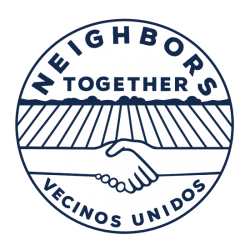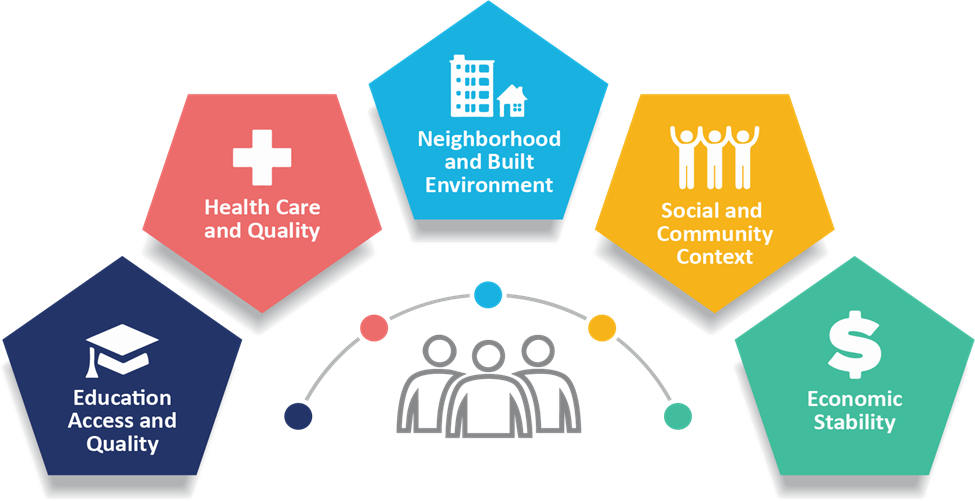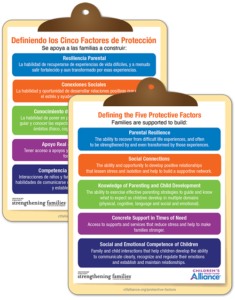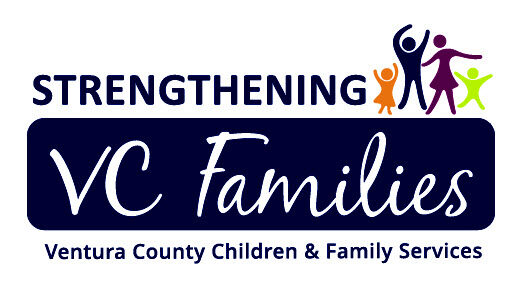
Neighbors Together Initiative is a project under the Ventura County Children and Family Services (CFS) ”Strengthening Families” umbrella of programs, with the purpose and focus of using data-informed methods to identify, refine, and bring additional effective practices and partnerships that improve family outcomes in diverse, high-need neighborhoods.
Neighbors Together Initiative | Vecinos Juntos Iniciativa
Introductory Letter
A Message from the Deputy Director

Deputy Director, Human Services Agency
Dear Families and Partners:
At Ventura County Children and Family Services (CFS) we believe in families! Our agency vision is to offer support, hope and opportunity to those in need. It is through this vision we have developed our Neighbors Together (NT) initiative. Specifically, our Neighbors Together Initiative is a project under the CFS Strengthening Families umbrella of projects. Within NT we are focused on working with our community to promote family well-being. We believe by having consistent staff for the Oxnard area, and intentionally providing staff who are a reflection of the community they serve, we can join with the community and make a difference for the better. Our social workers will work with families and focus on strengthening families and building protective factors. This will promote parental resilience and give families a way to orchestrate their own unique path to health and safety. Through partnership with our social workers, parents will identify and build their own culturally relevant and meaningful protective factors. Underpinning these efforts will be a focus on building a wide array of community –based services to both prevent child maltreatment and assist families in need to keep their children safe. The result will be a continuum of services that can help build child, youth and family well-being.
Child Welfare in our country is changing. There is growing recognition around the need to move our efforts upstream in order to preserve families whenever safe and possible. Moving from family separation to a family preservation mindset takes strategic and intentional efforts. Key elements for achieving the NT vision will rely on:
- Family Engagement
- Cultivating Solutions
- Child & Family Team Meetings
We believe in a culture of compassion where our dedicated staff work with families and lead with innovation to help keep children and youth out of foster care and keep them in their communities of origin. By empowering families, we strengthen communities!
Citizen Review Panel
For two decades, Ventura County Children and Family Services (CFS) convened a Citizen Review Panel (CRP) to review and improve child welfare outcomes. When California shifted the CRP role to the state level, Ventura County sought to use their last year of CRP funding (2016-2017) to expand the data review. Geo-mapping was conducted to determine child welfare entry by location (zip code) throughout the county. The findings and ensuing discussions galvanized the CRP members to compare geo-mapped family outcome data for numerous public and community agencies. A summary of key findings include:

Five geographic enclaves had proportionally higher child welfare entry. Zip codes in Simi Valley, Camarillo, Santa Clara Valley, and Ventura (west) had neighborhoods with high child welfare entry. However, five contiguous zip codes in the Oxnard Plain region comprised over 50% of the child welfare entries in 2016 and 2017, despite representing only 26% of the Ventura County population.
CRP public and community agencies reported that families in high child welfare entry neighborhoods used more agency resources and had higher service utilization than in other areas of the county. Discouragingly, a higher proportion of these families and their children entered the criminal justice systems, received mental health and public health services, and were enrolled in special education services. They also utilized public and community services in higher numbers. It was evident that despite resources, families continued to struggle.
Demographic data (2015) reported that Latino/a children represented 55.8% of the Ventura County child population (0-17 years of age). However, 72% of children in the foster care system were Latino/a. Ethnic disproportionality was also reported in high-child welfare entry neighborhoods. Two-thirds of Ventura County Latino/a foster care entries were in five contiguous zip codes in the South Oxnard area.
Neighbors Together Alliance
From 2017- 2019, the Neighbors Together Alliance convened to maintain the momentum started by the Citizen Review Panel. CFS launched the Neighbors Together Alliance in the Oxnard Plains region most challenged with higher child welfare entry. The coalition attracted a large, diverse group of county and community stakeholders. Conversations explored the influence of cultural, racial, and citizen status on the daily life and trajectory of neighborhood residents.
During the second year of Neighbors Together Alliance, the Ventura County Human Services Agency lead community discussions on Oxnard’s social mobility data, also known as social determinants of health. These health components are considered ‘root causes’ for health and wellbeing. Social determinants of health play a role in not only health outcomes, but also child welfare involvement. For example, there is robust documentation for the relationship between ‘unhoused’ or ‘unstable’ housing status and increased child welfare involvement. In summary,
- High child welfare entry neighborhoods had fewer social determinants of health. Ventura County Human Services Agency data reported fewer social mobility factors in the Oxnard Plains region to include decreased educational attainment levels, decreased home ownership, and higher poverty levels.
SOCIAL DETERMINANTS OF HEALTH

Our Call to Action
Community coalitions and conversations created an urgency to improve the circumstances for families from ethnically diverse backgrounds living in high-need communities. Even with public and private resources, family outcomes had not improved. Business as usual was not making a difference.
It became apparent that improving child welfare outcomes required new, data-informed ways to harness the power of community and address the impact of inequities. With this vision for change, the Neighbors Together Initiative was launched.
Neighbors Together
Theory of Change
IF WE, and our partners, assist at-risk families to build culturally relevant protective factors,
AND WE, use data-informed methods to ensure our efforts meet families’ needs,
THEN, families are stronger and more resilient,
SO THAT, families can keep their children safe and thriving.
Primary Objectives
Decrease child welfare entry and reentry in diverse, high-need neighborhoods.
Reduce child welfare disproportionality in high-need, diverse neighborhoods.
Increase use of data-informed methods to ensure practice shifts effectively address families’ needs.
Key Strategies
The Neighbors Together Initiative will employ the following three key strategies as part of the overall design.
Child Welfare Practice Shifts
- Strengthen child and family protective and promotive factors.
- Prioritize early intervention and prevention efforts.
- Partner to address families’ basic needs.
- Address racial and system inequities.
+
Engaged Partners
- Collaborate with public, private, and community providers and partners to advance family-focused intervention.
- Partner to build community resources that address social determinants of health.
+
Accountability
- Use data-informed strategies to ensure CFS practice shifts and services are effective.
- Disseminate Neighbors Together outcomes to ensure accessiblity and accountability.
=
Improved child & family outcomes Improved child welfare services & system
Partnerships
Implementing the Neighbors Together Initiative is unique in that service providers and community partners are essential components of the project design. As the project name implies, our mission is that neighbors work together to support families in-need. This Initiative seeks to prevent child welfare entry, in part, by strengthening the community’s capacity to offer a healthy environment that promotes well-being for all residents. Project activities will also facilitate collaboration and coordination across public-serving agencies.
Neighbors Together Partners
Contracted Service Providers
A wide array of evidence-based interventions and family supports will be available to assist families in the child welfare system. Data tracking will ensure the services are culturally relevant, linguistically appropriate, timely, and meet the family’s needs. Families’ satisfaction with contracted services will be solicited and used to improve both service delivery and service contracting. In addition, contracted services and those of Healthy Start social workers will be employed to assist families at risk for child welfare entry or reentry. This is in keeping with the Neighbors Together goal to also prevent child welfare engagement.
Leveraged Services
Data gathered as part of the community coalitions confirmed that agencies work with the same families. However, in a study conducted through First 5 Ventura County (EC-LINC 2019), families’ reported challenges navigating between systems. Identifying where to go and how to get there was especially challenging for non-English speakers and those with restrictions on service availability, such as families without citizenship documentation. Neighbors Together seeks to leverage partnerships across county and community agencies. Leveraging services can include creative solutions such data sharing and cross-agency co-location of staff. The goal of leveraged partnerships is to maximize coordination so that resources and services are easier for families to access and better meet families’ needs.
Community Coalitions
Several community coalitions address issues that impact families in-need. These include county-wide coalitions led by the Ventura County Child Abuse Prevention Council, Family Justice Center, and Ventura County Interagency Coordinating Council as well as efforts sponsored by the Oxnard School District and Oxnard Neighborhood Council. The Neighbors Together staff will participate as part of coalitions and provide leadership, where appropriate, to strengthen community resources in high-need neighborhoods.
Community Organizations
Most families rely on neighborhood agencies or resources such as youth groups, library programs, parenting classes, faith groups, and/or neighborhood recreation opportunities. These neighborhood assets are the backbone of a strong community. They also can provide a safety-net through supports such as food and clothing distribution or utility fee-reduction programs. The Neighbors Together Initiative will cultivate partnerships with community organizations and link families to supports that can endure beyond their engagement with the child welfare system.
“People want to help children without really understanding that children live in a family, and a family resides in a community, and a community is within a broader society that either has policies and a context that supports their health and wellbeing, or one that makes achievement of health and well-being difficult for some or many to achieve.”
— Dr. Melissa T. Merrick
Former Senior Epidemiologist, National Center for Injury Prevention and Control, Centers for Disease Control and Prevention
Work Plan
Work Plan Design
The five-year Neighbors Together Work Plan identifies specific service delivery practice shifts, partnerships, and accountability measures. Implementation will take place in Oxnard Plain high-need neighborhoods.
Social workers have a wide array of service delivery models available, such as the Core Practice Model, advocated by the California Department of Social Service. The Neighbors Together Initiative will add to foundational social work models by examining the most effective ways to operationalize best practices (practice shifts) in ethnically diverse neighborhoods with high-need families. In addition, the Ventura County CFS staff will integrate reflective methods to identify and address systemic inequities in their services and the agency.
Strengthening Families Through Protective Factors
This is a project under the CFS Strengthening Families umbrella of projects. Strengthening Families is a research-based, national framework developed in 2003 by the Center for the Study of Social Policy. The framework identifies five types of family protective and promotive factors associated with positive child outcomes and the prevention of child maltreatment. The Strengthening Families framework is advocated by the California Department of Social Services and child welfare experts such as US Department of Health and Human Services Children’s Bureau, Child Welfare Information Gateway, Prevent Child Abuse America, FRIENDS National Center for CBCAP, and Children’s Trust Fund Alliance.

Family Goals
- Strengthen Parental Resilience
- Strengthen Families’ Social Connections and Safety Networks
- Build Families’ Concrete Supports in Times of Need
- Strengthen Parents’ Skills and Knowledge of Child Development
- Strengthen Childrens’ Social and Emotional Well Being
Accountability Goals
A. Monitor and Adapt CFS Practice Shifts to Improve Efficacy and Equity
B. Ensure CFS Contacted and Leveraged Services Meet Families’ Needs
C. Ensure CFS Outcomes are Transparent, Accessible, and Inform Actions
Work Plan Development
- The Neighbors Together Unit and CQI Team assumed responsibility for finalizing and implementing the work plan, under the leadership of the Neighbors Together Manager. Implementation was just beginning when the COVID 19 pandemic began in March 2020. While the pandemic initially slowed the implementation timeline, the work has continued and is on track. The Work Plan was adapted in response to lessons learned during the pandemic, particularly concerning access to services.
- Established a Neighbors Together Workgroup to finalize the recommended practices that best fit the needs of Ventura County families in high-need neighborhoods. Workgroup participants included CFS staff across multiple units and with varying roles. The group coalesced around a core set of recommended action items.
- Partnered with Casey Family Programs to provide 1) consultation and staff training on best practice models (family finding strategies, data reviews, goal setting) and 2) data reviews of Ventura County child welfare measures critical to understanding the outcomes of families in diverse, high-need communities.
- Compiled potential interventions following an internal CFS audit and a national review of effective practice models and field-demonstrations.
